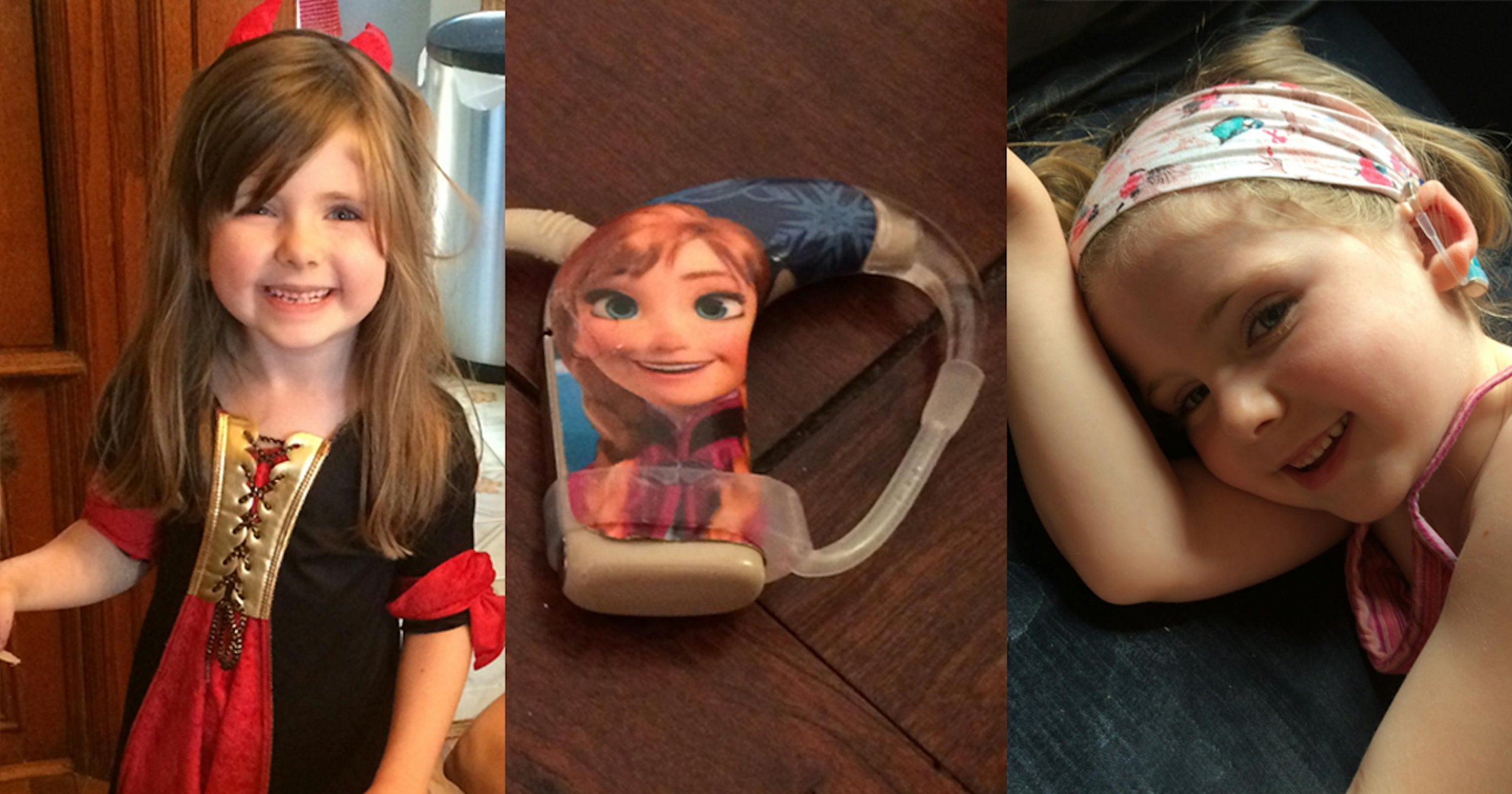How Cochlear Implants Helped a Little Girl and Changed a Family
How can sound transform a life? For one little girl, it changed everything.
Meet Rose Carney, a beautiful, six-year-old Brooklynite who was born with Profound Sensorineural Hearing Loss (SHL). SHL is due to missing or damaged sensory cells (hair cells) in the cochlea of the inner ear and is usually permanent. In normal functioning ears, those hair cells change sound into electric signals, which are sent via the auditory nerve to the brain.
Rose is the first child for Nicole and John Carney, who both enjoy full, healthy hearing and never considered that their daughter might be born deaf. However, after failing the fourth hearing test days after her birth, the parents knew something wasn’t right.
Rose was approved for intervention and fitted for a hearing aid. However, hearing aids are not ideal since they only amplify sound, need to be adjusted for a fast growing infant, and often leak sound – imagine rocking your newborn to sleep and hearing a high-pitched hissing coming from your daughter’s ear. Not exactly a pleasant memory.
After performing a CT scan of her inner ear, the doctors at NYU Langone Medical recommended cochlear implants for Rose. Cochlear implants are complex devices that consist of external hardware including a microphone, a speech processor and a transmitter. These components are magnetically attached to the internal hardware implanted in the child’s skull, which consists of the receiver/stimulator and electrode array that distribute the electronic pulses directly to the auditory nerve. It was designed so that the implant never needs to be replaced, and only the external hardware will need to be updated.
Although inserting machinery into a child’s skull sounds intense, to say the least, there was no hesitation for John and Nicole. Both parents were in full agreement that their child should get cochlear implants in both ears. Some parents or candidates elect to do one ear at a time, but John and Nicole wanted Rose to have full access to sound, which can help maximize speech and language development.
Rose underwent surgery when she was nine months old, and recovered quickly. The implants were activated one ear at a time a month after the surgery. This is because activation involves programming for the specific individual speech strategy the person will use. There are twenty-six electrodes in the coil of the processor, which audiologists must map in order for the implants to be effective. For an infant, it requires a little creative thinking on the part of the audiologist to train the child to react to the sound when they hear the beep in their ear. Theirs used a clapping monkey and a flashing light every time the sound was triggered from the computer system to her processor. Once Rose understood, when she heard a beep inside her head, she would look in the direction of the monkey in the box in hopes to see the toy and the flashing light, indicating that Rose heard the beep inside her head.
The parents couldn’t be more overjoyed to know that their daughter could finally hear their voices. Nicole remembered with delight that on Mother’s Day, three months after the surgery, she heard her daughter say “mama” for the first time.
Typically, children with hearing loss develop communication skills more slowly, which impacts the development of reading skills as compared to the average child. However, due to intensive speech therapy and years of intervention and discipline, Rose was reading at a first grade level and scoring high marks on intelligence tests in kindergarten. She still has issues with isolating sound when there is background noise or many people are talking at once, but her parents are trying to teach her to be more assertive and to let others know to talk one at a time.
Thankfully, there are many free support services and programs for children with hearing loss in New York City. Rose’s teacher uses a Frequency Modulation (FM) unit where a receiver is inserted into Rose’s processor so she can hear the teacher more clearly, especially when the teacher faces away or the kids are talking at the same time. There is also a hearing education specialist who comes into her school for one hour a day to work with Rose, the teacher and lunch aids.
Rose hasn’t had any problem with other children making fun… yet. While we all know that kids can often times be terrible to each other, Rose already appears to be well prepared for any flak that comes her way. “If you can’t see well, you wear glasses. I couldn’t hear when I was born so now I wear these,” she said, pointing to her cochlear implants processors. What a smartie.
Hear Rose tell Kim about her cochlear implant, in her own words:
Kim Paster is SVP, Operations at Made Music Studio. Talk to her on Twitter @KPaster.

